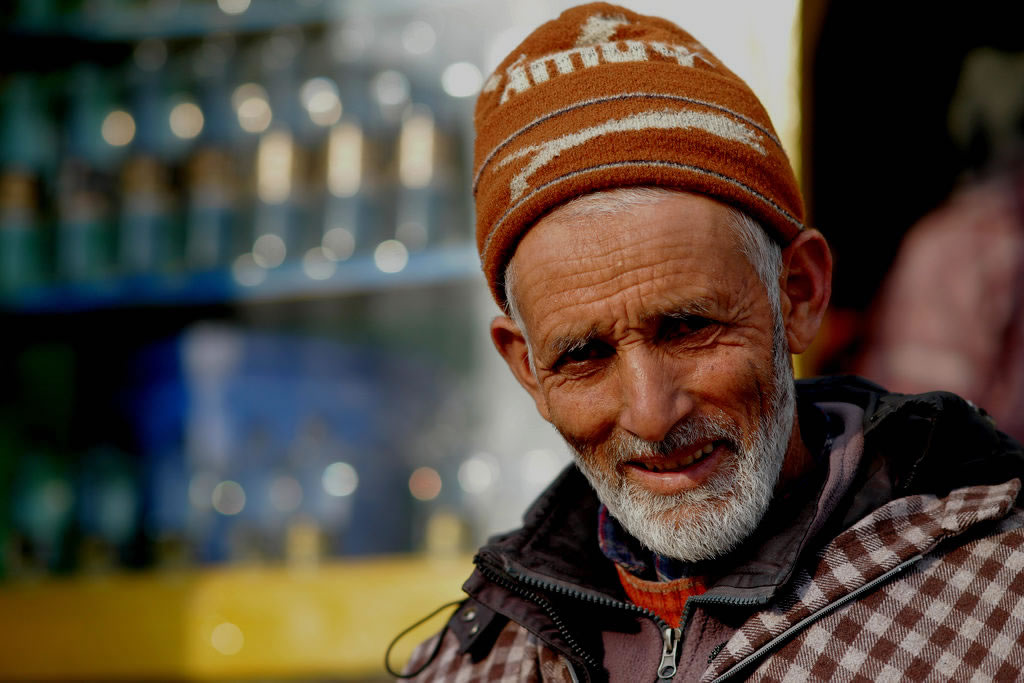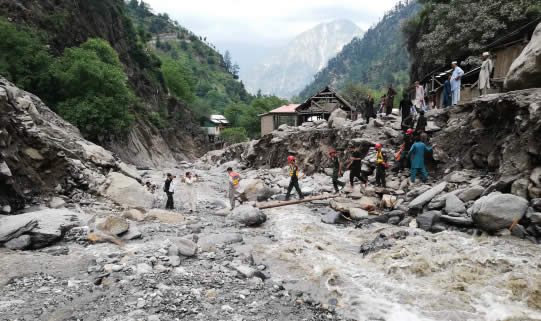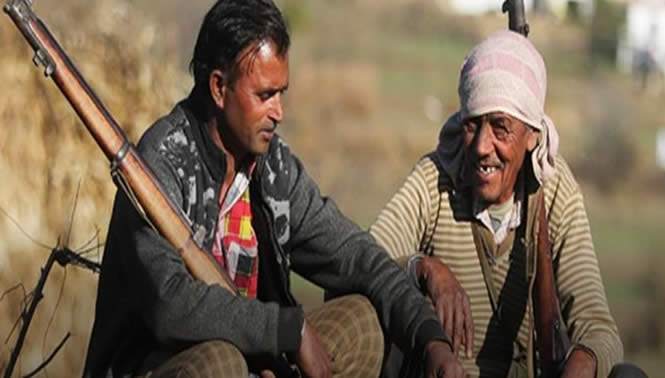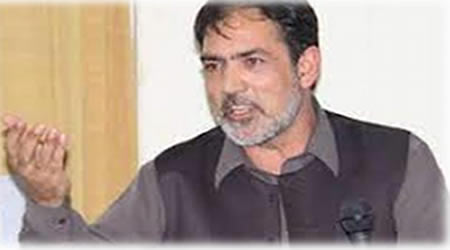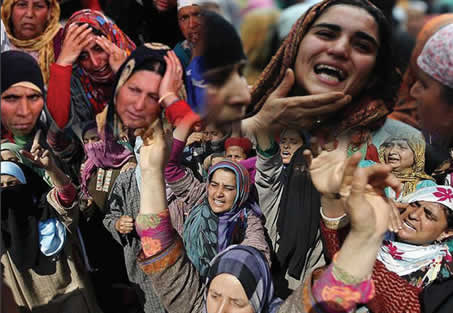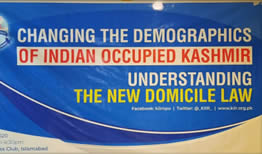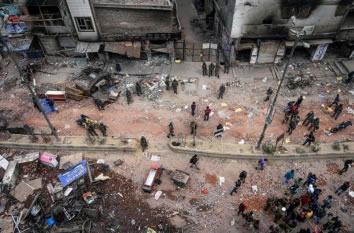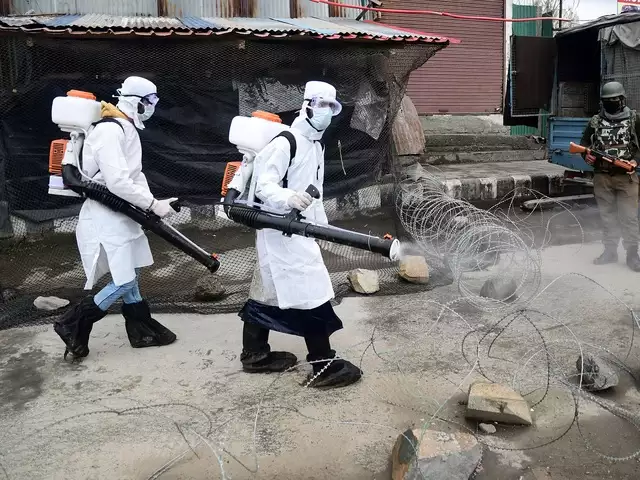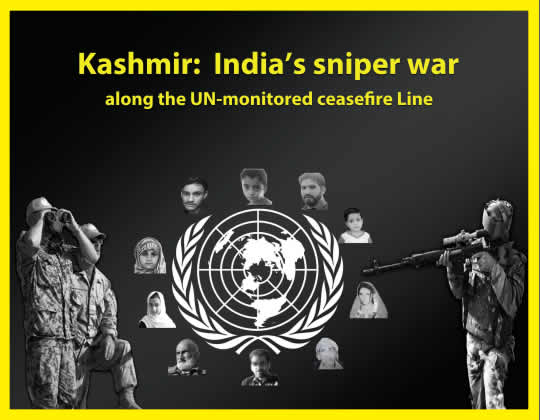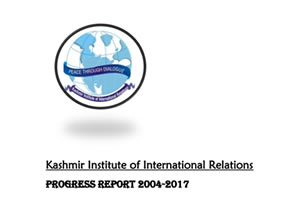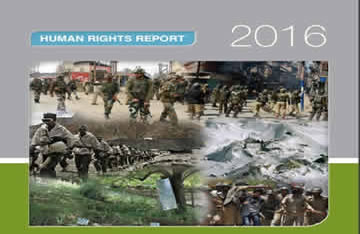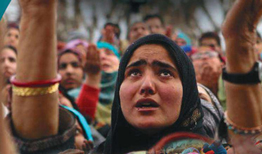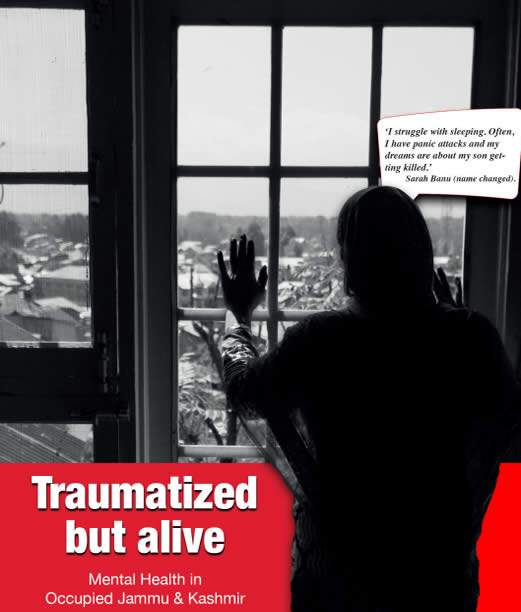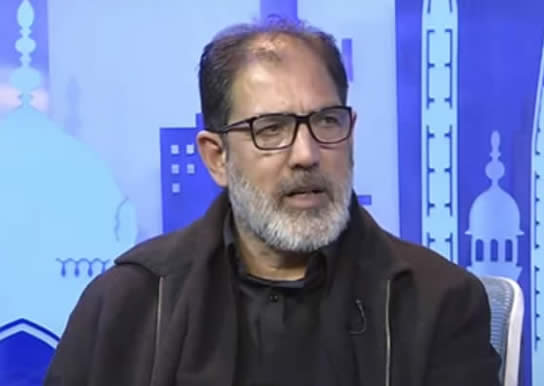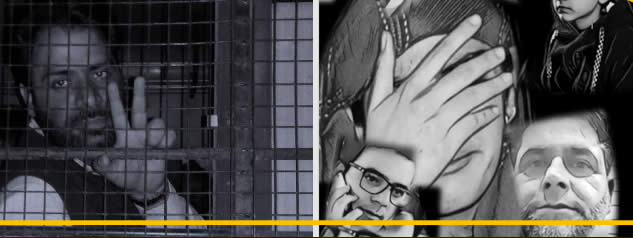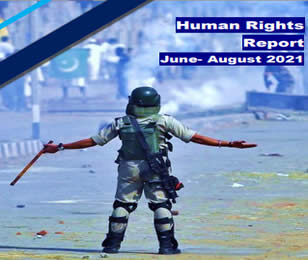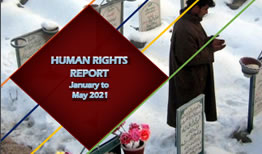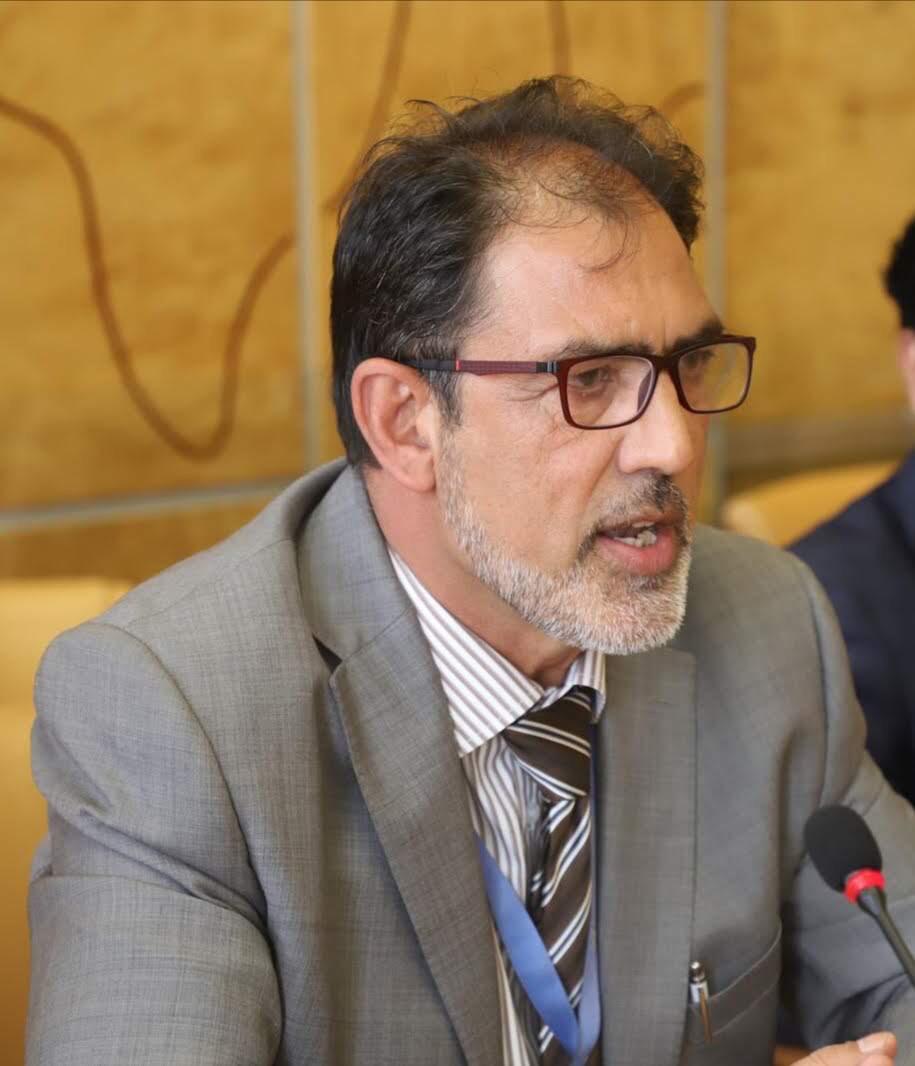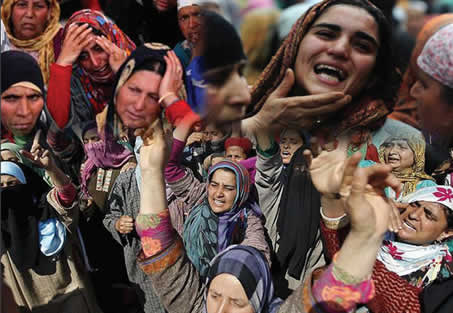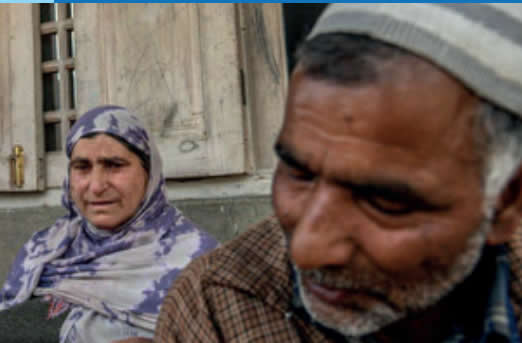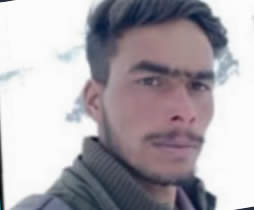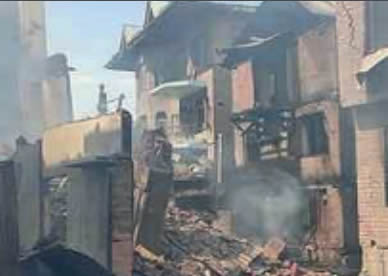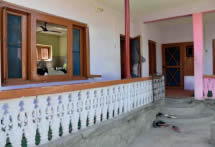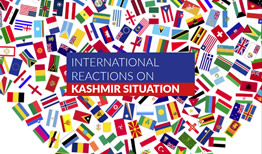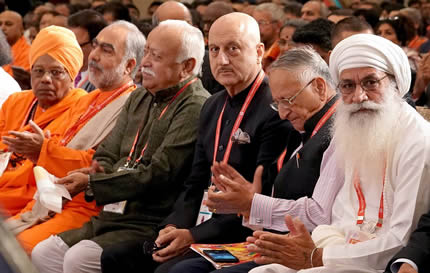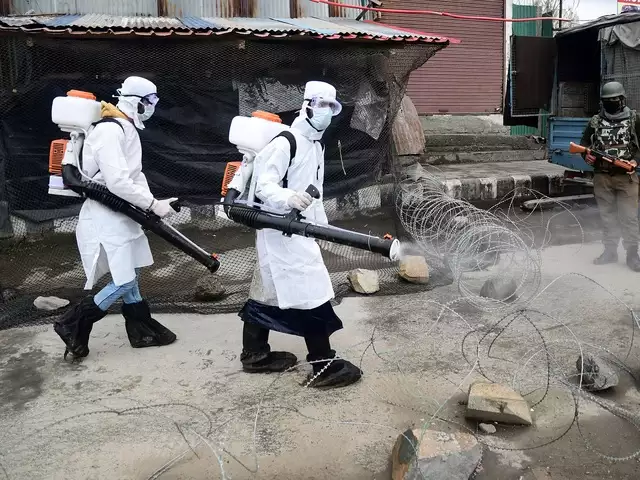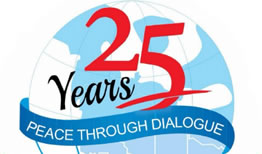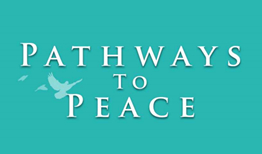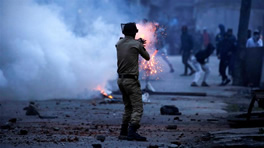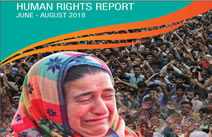INTERNATIONAL CONCERNS OVER HUMAN RIGHTS IN JAMMU AND KASHMIR
INTERNATIONAL CONCERNS OVER HUMAN RIGHTS IN JAMMU AND KASHMIR
INTRODUCTION
This report offers a compiled overview of international responses to the human rights situation in Indian-occupied Jammu and Kashmir from January to May 2025. It brings together statements from global leaders, press releases by international NGOs, letters to the Indian government and media coverage by leading international outlets. The situation in Jammu and Kashmir remains deeply concerning. Despite official claims of normalcy, the region continues to experience crackdowns on civil liberties, communication blackouts, arbitrary detentions and excessive military presence. These issues have been raised consistently by international observers, human rights groups and diplomatic voices.
This document includes press releases and statements by organizations such as Amnesty International, Human Rights Watch and the Organisation of Islamic Cooperation. It also features reactions from U.S. and European lawmakers, reflecting growing international concern over deteriorating human rights conditions in the region. Media reports by outlets such as the Washington Post, The New York Time, The Guardian and Al Jazeera highlight civilian suffering and the use of force by Indian occupation forces. The report aims to show how India’s narrative of peace and development in Kashmir has been challenged by independent sources. It contrasts government statements with evidence gathered by rights bodies and journalists.
The growing mismatch between official claims and ground realities has led to increased scrutiny at the global level. Kashmir remains a flashpoint between India and Pakistan, both nuclear-armed countries. This adds urgency to the human rights debate. Political repression in the region is not just a domestic matter but a threat to South Asian stability. The report emphasizes that unresolved grievances and rights violations could trigger further regional tensions. The compilation does not represent the opinion of any one organization. Rather, it reflects the collective concerns of global civil society and international media. It seeks to provide a factual, source-based record of the global response to the events of early 2025 in Jammu and Kashmir.
The purpose of this report is to inform policymakers, researchers and human rights advocates. It aims to contribute to an informed discussion about the way forward. The voices compiled here call for restraint, accountability and a rights-based resolution to the conflict. It is a reminder that lasting peace in Kashmir requires justice, inclusion and respect for the will of its people.
WOUNDS OF REPRESSION KASHMIR BI-ANNUAL REPORT
For the past 76 years, the people of Indian-administered Kashmir have been struggling for their U.N.-mandated right to self-determination. The Indian state’s occupation of Kashmir and its persistent repression of Kashmiri political aspirations have resulted in ongoing and egregious human rights violations.
This report, prepared by Justice For All, offers an overview and analysis of the multifaceted human rights violations and political developments in Indian administered Kashmir, from July to December 2024. While India presents Kashmir as “normal” and communicates a discourse of development, the report reveals the many wounds that India inflicts on the Kashmiri body politic; injuries that it conceals from the world’s eyes, or worse, that the world turns a blind eye to. Some of the major human rights violations observed during this period include: i) ongoing army violence and police abuse, including torture, arbitrary and illegal detentions and mistreatment of political
prisoners; ii) dispossessing Kashmiris of their properties including land and houses; (iii) economic disenfranchisement due to industrial and development projects that ignore ecological issues, disempower Kashmiri farmers and workers and send profits outside the region to Indian investors and workers; iv) suppression of religious freedoms like the right to congregate for prayer and targeting of religious leaders; and v) erasure and Indianization of Kashmiri cultural heritage.
FRONTLINE DEMOCRACY: MEDIA AMID POLITICAL CHURN
16INTERNATIONAL CONCERNS OVER KASHMIR ISSUE|Jan–May 2025 May 2025 The Guardians FRONTLINE DEMOCRACY: MEDIA AMID POLITICAL CHURN
South Asia witnessed tremendous change over the past year – via transformation effected through electoral ballots, as well as feet on the ground. Student movements and everyday citizens were among those leading phenomenal pushbacks against entrenched authoritarian regimes, voting out incumbent governments and expressing unified dissatisfaction with misgovernance, corruption and overreach. Amid the upheaval, the media played a critical role in amplifying people’s aspirations and speaking truth to the powerful Kashmiri journalists have also borne the brunt of state repression with many battling long drawn-out cases, with some serving jail terms for their reporting. Others are routinely summoned to police stations for verification, coerced into revealing sources, p laced on no-fly lists, have their passports revoked or their homes raided.
Internet shutdowns continue to be another way of turning off the switch on information sharing that is unpalatable to governments. According to digital rights advocacy group Access Now, for the first time since 2018, India with a total of 84 internet shutdowns in 2024 was not ranked first in internet shutdown orders, following Myanmar this year with 85 shutdowns. Shutdowns were done on various pretexts: communal conflict, protests and instability, to prevent cheating in exams and elections, with Manipur and Kashmir facing the highest number of shutdowns.
THE SHARED STRUGGLES OF INDIA, INDONESIA ARE A CHANCE TO PUSH FOR HUMAN RIGHTS AT HOME AND ABROAD
In India, laws and policies systematically discriminate against minorities, particularly Muslims. As former colonies, India, which was ruled by the British and Indonesia ruled by the Dutch, both countries inherited complex demands for self-determination in Jammu and Kashmir and in West Papua. This has led to human rights violations by security forces, who are seldom prosecuted for their crimes and by armed groups. The governments of both countries should address historical grievances instead of punishing people for exercising their fundamental rights to freedom of expression, association and peaceful assembly.
INDIA: LOCAL REPORTERS FACE RISK OF VIOLENCE, MURDER
RSF’s Mercier said journalists face reprisals in the “form of direct attacks, tax investigations, legal proceedings or the threat of detention under anti-terrorist legislation.” “Anti-terrorism laws are abused to imprison journalists, such as the UAPA [Unlawful Activities (Prevention) Act] law, especially in Kashmir,” she said. She also highlighted the prevalence of cyber harassment campaigns targeting journalists on social media, aimed at discrediting them as “traitors” or “anti-nationals” to delegitimize their work.
“When Gauri Lankesh was shot dead in broad daylight a few years ago, there were celebrations on twitter by handles that were being followed by Prime Minister Narendra Modi,” she said. “This just shows how vulnerable journalists are in this country.
HUNDREDS OF BOOKS SEIZED FROM STORES IN KASHMIR AS INDIAN POLICE CRACK DOWN ON DISSENT
Most titles written by Islamic scholar who founded an Islamic organisation banned in the disputed region Police in Kashmir have raided dozens of bookstores and seized more than 650 books as part of crackdowns on dissent in the Indian- administered region. Most of the titles were written by Abul A’la Maududi, a prominent 20th-century Islamic scholar who founded Jamaat-e-Islami, an Islamic organisation banned in Kashmir.
Raids began last Friday in Srinagar, Kashmir’s main city, before moving to other parts of the disputed region. In a statement, Srinagar police said that the raids were “based on credible intelligence regarding the clandestine sale and distribution of literature promoting the ideology of a banned organisation” and that 668 books were seized in all. The books were mostly published by Markazi Maktaba Islami Publishers, based in New Delhi, which is affiliated with the Indian branch of Jamaat-e-Islami, one of the largest religious and political organisations in the Indian subcontinent.
THE WAR ON KASHMIRI WOMEN’S BODIES:FIVE YEARS AFTER ARTICLE 370 INDIAN CONSTITUTION: A TRIBUTE TO THE KASHMIRI VICTIMS OF GENDERED VIOLENCE AND OCCUPATION
On August 5, 2019, the Indian government unilaterally revoked Article 370 of its Constitution[1], stripping Jammu and Kashmir of its special status and autonomy. Harsh curfew, widespread communication blackouts, the mass detention of political leaders and reports of enforced disappearances and violent crackdowns followed this drastic move. The Indian occupation of Kashmir, rooted in a tumultuous history dating back to 1947, has been marked by decades of systemic violence, repression and human rights abuses
. Among the most heinous tactics employed is the weaponisation of gender-based violence– a deliberate tool used to break resistance, dehumanise communities and suppress Kashmiris identity. The mass rape at Kunan Poshpora, on 23rd February 1991, serves as a chilling reminder of how sexual violence is systematically wielded as a tool of state repression, entrenching cycles of trauma and silencing dissent.
Victims recall how occupying forces entered their homes, declaring that the violence was not merely rape but a “war” on their bodies. This article examines the use of rape as a weapon of war in Kashmir, exploring its devastating impact on dignity, identity and human rights while highlighting the international legal implications of such violation.
RISE AND FALL OF KASHMIR’S FIRST INDEPENDENT MAGAZINE, KASHMIR WALLA
Jailed, silenced and erased—how a fearless journalist built Kashmir’s most vital independent news platform, only to see it brutally shut down by the state. The Kashmir Walla, known for its bold coverage of politics, conflict and human rights, became too powerful to ignore— so they made sure it disappeared. Srinagar, Kashmir: Journalism is becoming increasingly challenging worldwide, but in Indian-administered Kashmir, it is not just difficult— it is outright dangerous. The region has become a testing ground for new methods of controlling journalists, silencing dissent and sending a clear message: even in one of the world’s largest democracies, independent and critical journalism will not be tolerated. From censorship and intimidation to arrests and enforced disappearances, the press in Kashmir operates under constant threat, making it one of the most perilous places to be a journalist today.
Despite these mounting challenges, independent voices like The Kashmir Walla continued to strive to document the truth in an environment increasingly hostile to journalism, but that too was wiped out in 2020 and the founder was arrested and imprisoned for two years under different cases originally meant for criminals.
NDIAN SOLDIERS DEMOLISH HOMES OF PAHALGAM ATTACK SUSPECTS IN KASHMIR
oldiers demolish homes of alleged attackers in Kashmir following the region’s deadliest civilian assault in decades. Soldiers in Indian-administered Kashmir have demolished the homes of two men suspected of carrying out the disputed region’s deadliest attack against civilians in nearly two decades. Police say the attackers are members of The Resistance Front (TRF), a faction of Pakistan-based Lashkar-e-Taiba (LeT). Pakistan rejects the allegation. Meanwhile, Indian security force..
WAVE OF KASHMIR DISAPPEARANCES, MYSTERY DEATHS SPOOK TRIBAL COMMUNITY
oung men disappear, their dead bodies found weeks later in canals. Authorities claim they drowned or died by suicide. Kashmir’s Gujjars refuse to believe that. Kulgam, Indian-administered Kashmir — When Showkat Ahmad’s body was found, it had sores and a bloodied eye. His hair was falling out and the skin on the 18-year-old’s hands and legs was peeling off, recalled his father, Mohamad Sadiq. That was March 16, three days.
‘NOWHERE TO GO’: KASHMIR VIOLENCE ESCALATES AMID INDIA-PAKISTAN CROSSFIRE
Families in Kashmir face devastation as homes are destroyed and lives shattered on both sides of the border. The largest Indian attack was on an Islamic seminary near the Punjabi city of Bahawalpur, killing 13 people, according to the Pakistan military. Madasar Choudhary, 29, described to the AFP news agency how his sister saw two children killed in Poonch, on the Indian side of the frontier, on Wednesday. “She saw two children running out of her neighbour’s house and screamed for them to get back inside,” Choudhary said, narrating her account because she was too shocked to speak. “But shrapnel got tothe children – and they eventually died.” Muhammad Riaz said he and his family had been made homeless after Indian attacks hit Muzaffarabad..
‘DON’T WANT WAR’: KASHMIRI TOWNS CAUGHT IN DEADLY INDIA-PAKISTAN CROSSFIRE
Srinagar, Indian-administered Kashmir – As the camera panned around a home blown up by the mortar fire in Poonch, an embattled hill city perched on the disputed border between India and Pakistan, a disembodied female voice cried out. “This is a calamity.” The video, shared with Al Jazeera by locals in Poonch, revealed a collapsed staircase, large craters in the walls and a courtyard cluttered with rubble and clothes and painted in blood. “Everything I built is in ruins,” the voice exclaimed, loaded with anguish. At least 11 people have been killed in Poonch district from Pakistani firing into Indian-administered.
OPERATION SINDOOR AND THE WAR AT HOME
Abroad, India shows a united front against terror. At home, critics face bans and FIRs while hate campaigns get louder and go unpunished. Since the Pahalgam attack, several revenge videos of vandalism and assault emerged, but none as chilling as the video from Agra, in which a Hindu extremist claimed responsibility for shooting two Muslim men. Police quickly clarified the video was fabricated, but the damage was done. According to police, one Muslim man was killed in a separate incident, unrelated to the video. The perpetrator reportedly sought notoriety. Later reports suggested that the attackers intended to record the murder to vitiate public order.
A Muslim man from Kerala was lynched in Mangaluru after being falsely accused of pro-Pakistan sloganeering during a cricket match. In Uttarakhand, there was a fresh wave of violence against Kashmiris and local Muslims. While police have contained the attacks, they have done little to restrict the online mobilisation driving this incitement. Such incitement and rampant violence warranted a decisive response from both central and State leaderships. Yet, no warnings were issued to the extremists who exploited.
ESCALATING CONFLICT BETWEEN INDIA AND PAKISTAN THREATENS CRUCIAL LONG- STANDING AGREEMENTS
April’s attack in Pahalgam killed 26 people and injured 17. India’s security forces allege Pakistan’s involvement, which Islamabad denies. The incident has struck a nerve across India because it intentionally targeted tourists, says Tahera Mandviwala, a Member of the IBA India Working.
‘I PRAY THIS CALM LASTS’: FEAR LINGERS IN KASHMIR AMID UNEASY PEACE
Residents of India-administered Kashmir worry root cause of conflict remains and return of violence is inevitable “The point is that Kashmir is not peaceful or normal. It is a war zone. So if you bring tourists here, these attacks can happen anywhere, anytime. Security forces cannot be everywhere at once.” For ordinary Kashmiris, the situation feels increasingly helpless. On one side looms the constant threat of renewed violence; on the other, a harsh internal crackdown. In the aftermath of the Pahalgam attack,hundreds have been detained. About 90 people – mostly young men – have been held under the Public Safety Act, a draconian law that allows detention without trial for up to two years.
INDIAN PROFESSOR ARRESTED OVER SOCIAL MEDIA POST ON MILITARY OPERATION
Ali Khan Mahmudabad, associate professor at Ashoka University, held after complaint filed by a youth leader of the ruling Bharatiya Janata Party. A professor from an elite, private liberal-arts university in India has been arrested for a social media post about news briefings on the military operation against Pakistan more than a week after the two nuclear-armed neighbours agreed to a ceasefire, according to local media reports. Ali Khan Mahmudabad, an associate professor with the Department of Political Science at Ashoka University, was arrested on Sunday under sections of the criminal code pertaining to acts prejudicial to maintaining communal harmony, incitement of armed rebellion or subversive activities and insults.
HINDUTVA IN KASHMIR AND ZIONISM IN PALESTINE
I would like to add to this, in addition to white supremacy, any kind of ethnic “supremacy.” That the Indian “project” in Kashmir is a settler- colonial one cannot be denied. The killing of Kashmiris in their own nation, the destruction of their means of livelihood, the replacing of Kashmiri government officials in Kashmir with Indians – these and other violations of international law and the human rights of the Kashmiri people demonstrate clearly the brutal settler-colonial project of India. Both India and Israel repress free speech and freedom of the press.
After the abrogation of Article 360 of the Indian constitution, India implemented a complete Internet blackout in Kashmir that lasted for nearly 18 months 2 . Israel, for the last 19 months, has targeted journalists, press vehicles and buildings, especially in the Gaza Strip, forbidding foreign journalists from entering and killing at least 178 journalists as of February of this year. The racist regimes of India and Israel both use indefinite detention, which enables.
KASHMIR’S RESIDENTS ARE LIVING UNDER THE WATCHFUL EYE OF SURVEILLANCE
Since the disputed region had its semi-autonomous special status revoked in 2019, communities have faced increased scrutiny On the night of 5 January 2022, a young journalist from Bandipora’s Hajin area called Sajad Gul was arrested by men in uniform at his home. He was questioned for uploading a video clip to the social media platform X of women in a nearby area allegedly protesting the killing of a local militant leader. He had attended the protest to report on the incident. The local police detained him under the Public Safety Act, which allows for a maximum two-year...
THE DYNAMICS BEHIND THE INDIA-PAKISTAN CLASH
How internal politics in both countries could escalate the conflict in the wake of a tourist massacre in Kashmir. Early on Wednesday morning, India launched military strikes against Pakistan, killing more than thirty people, according to the Pakistani government. Yesterday, the Indian government claimed that Pakistan had responded with extensive drone strikes of its own. It is the largest military confrontation between India and Pakistan in decades. The two countries have been in conflict with each other for more than seventy-five years; this latest volley was set off when twenty-five Indian tourists were killed in a terrorist attack last month in the territory of Jammu and Kashmir. (A local Kashmiri resident was also killed.)
The Kashmir region has a long history of militant activity, some of it funded and sponsored by Pakistan and of opposition to Indian rule. The majority of Kashmir acceded to India after the 1947 Partition and the Indian government has committed extensive human-rights violations there. In 2019.
ALONG INDIA’S KASHMIR BORDER WITH PAKISTAN, FARMERS FEAR NEW WAR
Mr. Naik, who has three daughters and a son, says he tries to keep his children far from war, but they ask questions. “War is destruction and nobody wins a war,” he says he tells them. “Every country in the world that is at war is facing losses.” Elsewhere on the Line of Control, in the district of Jammu, Haji Mohammad Jamsheed, a contractor, says that even though people have prepared for the worst, nobody wants a war. Following the news so as to stay updated about the situation, Mr. Jamsheed says his neighbors are afraid because both countries are nuclear powers.
“If they hit each other with anything, we will be caught in the middle,” he worries. With his four children in school, Mr. Jamsheed hopes that India and Pakistan will step back from the brink. And the TV footage he has seen only strengthens that sentiment. “Everyone has watched the war in Gaza on social media and the news,” he says. “You can see how much worse it could get and we don’t want that.
BEYOND THE HEADLINES: EXPOSING THE MACHINERY OF INDIAN PROPAGANDA
Globally, India covers the sins with accusations by exporting internal issues with a perpetual blame game. By framing terror attacks as foreign-sponsored terror, silences the questions about local grievances, genocide in IIOJK and illegal occupation of Jammu and Kashmir by the Indian army. This is not an isolated incident, a multidimensional strategy followed by a cycle of false flag operations including the Mumbai Attacks in 2008, the Pulwama Attacks and the Balakot Airstrikes. Such as the 2000s Chattisinghpora massacre, initially blamed on Pakistani militants, later sought concrete evidence suggesting the involvement of Indian security forces, confirmed through an investigation Central Bureau of Investigation and reported by The Hindu (2003).
In contrast to India’s theatrics, Pakistan’s response has been characterised by restraint and strategic clarity, Prime Minister Shehbaz Sharif and opposition leaders have categorically condemned the tragic incident while rejecting baseless allegations. On Saturday, addressing a passing-out parade at Pakistan Military Academy Kakul, the PM said, “Pakistan is open to participating in any neutral, transparent and credible investigation”. The premier criticised India for continuing with a “pattern of exploitation”, leveling baseless allegations and false accusations without credible investigation or verifiable evidence. Whereas former Foreign Minister of Pakistan Bilawal Bhutto-Zardari called for a UN-mediated investigation and multilateral dialogue between India and Pakistan further illustrates Pakistan’s commitment to more legal, diplomatic and justified avenues, a stark counterpoint to India’s belligerent moves.
Notably, the United Nations Secretary-General Antonio Guterres has urged both Pakistan and India to exercise maximum restraint and to ensure that the situation and developments do not deteriorate further. Far from promoting peace, India is fanning the flames through sensationalised and distorted narratives and acts of war. While Pakistan seeks more legal and diplomatic measures to respond to India’s disturbing moves that may end in regional instability. Continuous building of false narratives and accusations of cross- border terrorism without evidence would further exacerbate the conflict.
Related Reports
